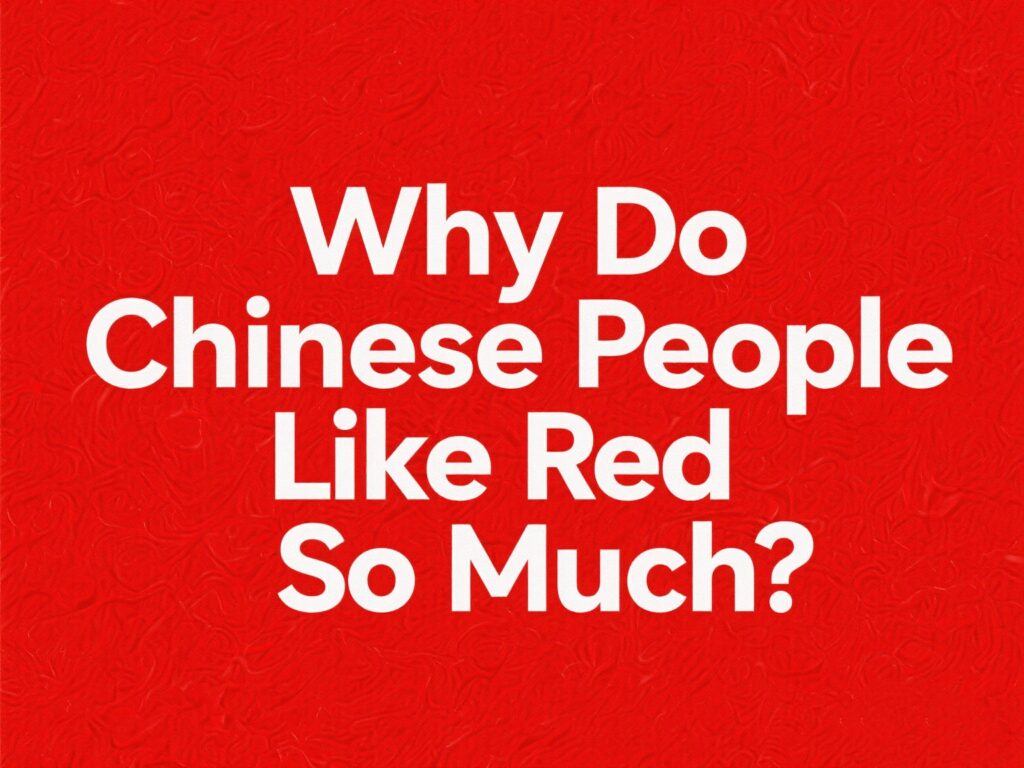The Chinese fascination with the color red is no accident—it is a result of thousands of years of cultural accumulation, spiritual symbolism, and practical tradition. Red is more than a bright hue; it’s a vital cultural emblem that touches nearly every aspect of life in China. Let’s explore why this one color carries so much weight, both visibly and invisibly.
What Does Red Symbolize in Everyday Chinese Culture?
Red is considered the ultimate symbol of joy, vitality, and luck. It’s prominently featured in Chinese New Year decorations, wedding attire, and celebratory gifts. The association goes beyond aesthetics—red is linked to fire and the sun, representing warmth, brightness, and the power to ward off evil spirits.
Its similarity to the color of blood also means red evokes life, health, and renewal. This symbolism makes it an ideal choice for festive and auspicious occasions, where the emphasis is on harmony and well-being.
How Has Red Become a Cultural Tradition in China?
Over centuries, red has evolved into a deeply ingrained cultural marker. In imperial times, red walls and red carpets were reserved for royal spaces, reinforcing authority and grandeur. In folk traditions, people wear red during their zodiac birth year (本命年) to ward off misfortune.
These visual rituals are not accidental—they are a reflection of collective memory and belief. From temple lanterns to wedding banners, red has become an emotional shorthand for good fortune and celebration.
What Role Do Philosophy and Religion Play in Red’s Cultural Status?
All three major Chinese belief systems elevate red to a revered position:
- Confucianism regards red (specifically chi or crimson) as the color of virtue and social harmony, giving it ceremonial authority.
- Taoism uses red cinnabar to draw talismans and perform rituals, believing it carries protective and purifying powers.
- Buddhism adopts red for monks’ robes and temple designs, symbolizing compassion and sacred energy.
These philosophical endorsements have added spiritual layers to the color, making red not just lucky, but holy.
Does Ancient Tribal Culture Explain the Roots of Red Worship?
Yes, even pre-dynastic Chinese tribes played a role. The Yan Emperor (炎帝), a legendary ancestor of Chinese civilization, is said to have revered fire and used red as a symbol of strength and vitality. This early reverence for red as a symbol of power was passed down over generations and became part of the nation’s shared mythology.
Was Red Also a Practical Choice in Ancient China?
Surprisingly, accessibility helped red become widespread. Ancient Chinese were able to extract red dye from natural sources like safflower, madder root, and cinnabar. These dyes were relatively easy to obtain and process, which made red fabrics and decorations common even among the general population.
For example, red canopies used during Western Zhou royal ceremonies gradually became common in private households, reflecting both prestige and accessibility.
What Do the Five Elements Teach Us About the Meaning of Red?
According to the Five Elements (五行) theory, red is aligned with fire (huo) and the southern direction. During the Han Dynasty, the Doctrine of the Five Virtues (五德终始说) positioned red as the dominant ceremonial color due to the dynasty’s association with fire. This philosophy infused red with not just mystical importance, but also political and dynastic authority.
Is Red Still as Popular in Modern China?
Absolutely. From red envelopes (hongbao) to national holidays, red remains central to Chinese social and visual life. It’s not just tradition—it’s emotional. Red creates a shared cultural space where people feel connected, optimistic, and protected.
FAQ: Your Curious Questions About Red in China
Q: Is red only for happy occasions in China?
Yes, red is almost exclusively reserved for positive events. You won’t see it used for mourning or solemn ceremonies.
Q: Why do people wear red during their zodiac year (本命年)?
Because it’s believed that your zodiac year brings challenges, red is used to ward off bad luck and attract protective energy.
Q: Is red used in modern design and branding in China?
Definitely. Many Chinese brands, logos, and advertisements use red to signal luck, confidence, and success.
Final Thoughts
The Chinese love for red runs deeper than surface-level beauty—it’s about cultural identity, historical continuity, and symbolic power. Red is a color that speaks of celebration, protection, and pride. For Chinese people, to embrace red is to embrace a piece of their own cultural DNA.
